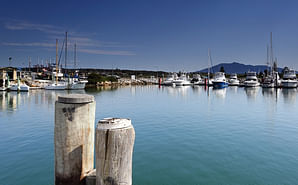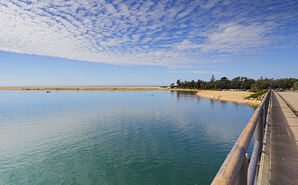Swimming Pool Safety
An average of 10 children under five drown each year in backyard swimming pools across Australia. See the latest safety practices to prevent drowning and pool injuries.
Did you know? An average of 10 children under five drown each year in backyard swimming pools across Australia.
Tragically, in addition to the deaths, many more children suffer serious injuries or permanent damage as a result of near-drowning experiences.
Pool safety is a system of child-resistant barriers that restrict access to the pool area by children. Two factors are consistently identified with pool drowning and near drowning; access to the pool and adult supervision.
If access to the pool is restricted and maintained the child is more likely to be supervised as someone has to let the child into the pool area.
"It is a sad fact that for every drowning death victim there are three to four near drowning survivors and that over 22% of near drowning victims are left with severe or persisting consequences."
Samuel Morris Foundation Director, Michael Morris.
With over 300,000 backyard swimming pools in NSW, swimming pool safety is a vital issue that affects the whole community. In NSW, private or ‘backyard’ swimming pool safety is legislated by the Swimming Pools Act 1992 and the Swimming Pools Regulation 2008.
In NSW, an average of 11 children under five years of age drown annually, with a further 62 children being admitted to hospital each year for near drowning. Children under five years of age have the highest mortality rate out of any age group, with approximately 70% of drowning deaths occurring in swimming pools.
Pool fencing gives added protection by preventing access to the pool area. However, inadequate pool fencing continues to be a major contributing factor in the rate of drowning among children under five years of age.
If you own a pool or rent a property with a pool, you have a direct impact on pool safety. You are should be part of the Action Plan for Pool Safety and you should check their swimming pool regularly throughout the year, especially in the months leading up to summer.
Pool fencing is designed to save children's lives by preventing their access to pools. However, it is alarming to see that the majority of children under five years of age who drown in swimming pools, do so as a result of fencing that is not compliant with the legislation
In other words, pool fencing that is not working or not being used as designed is contributing to the number of children drowning. A four sided fence, that does not include any part of the home, has proven to be the safest.
- Check there are adequate pool safety barriers in place separating the pool from the residence, adjoining properties and the neighbourhood.
- Are these barriers compliant with current legislation?
- Ensure all of the pool safety barriers are maintained and operating, e.g. check gates are self-closing and self-latching.
- Supervise children when using the swimming pool.
- Make sure pool gates are kept closed at all times.
- Keep articles, objects and structures at least 900mm clear of the pool fence at all times, e.g. chairs, pot plants or anything that can be dragged close to the gate to allow kids to attempt to open the gate.
These key actions can prevent a child drowning:
- Always supervise children from within arm's reach when they are in and around the water.
- Restrict their access to the pool
- Ensure your pool fencing and barriers comply with the relevant standards.
- Never rely on older siblings to supervise younger children, no matter how confident you are about their ability to watch the younger child. Children are not capable of such responsibility.
- Learn resuscitation - Infant and Child Cardio-Pulmonary Resuscitation (CPR).
- Teach your children to swim and familiarise them with water, but never assume that they are not likely to drown.
Yes, if you're a parent, we encourage you to introduce your children to water safety at an early age and to enrol them in swimming classes. There are several learn-to-swim classes available within the Bega Valley Shire. Please refer to Council's local pools for more information or local swim schools offering swimming courses locally.
We also encourage you to learn resuscitation techniques in case of an emergency. Resuscitation (CPR) training is available through a number of recognised organisations available in the Bega Valley shire.






